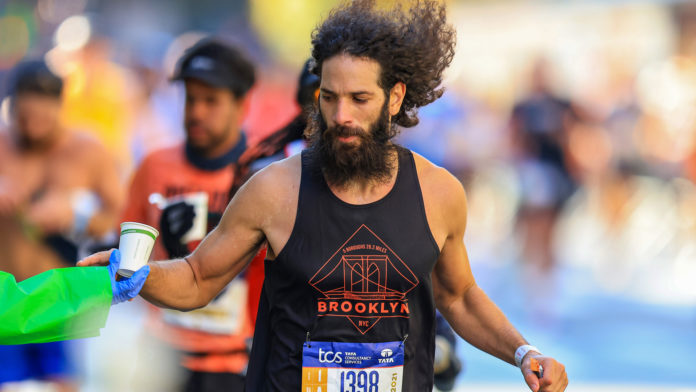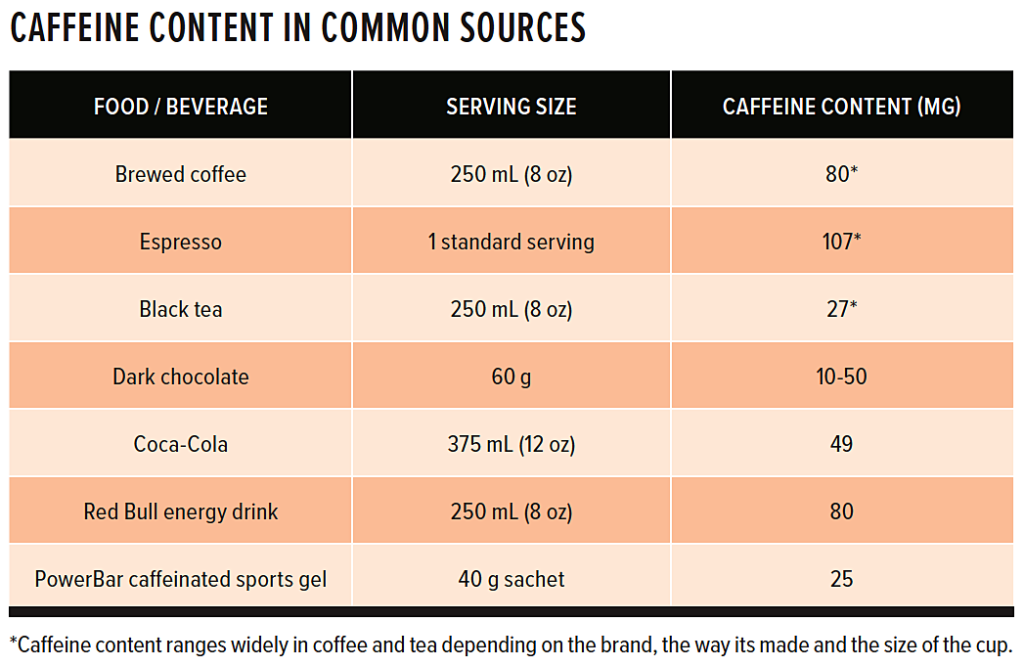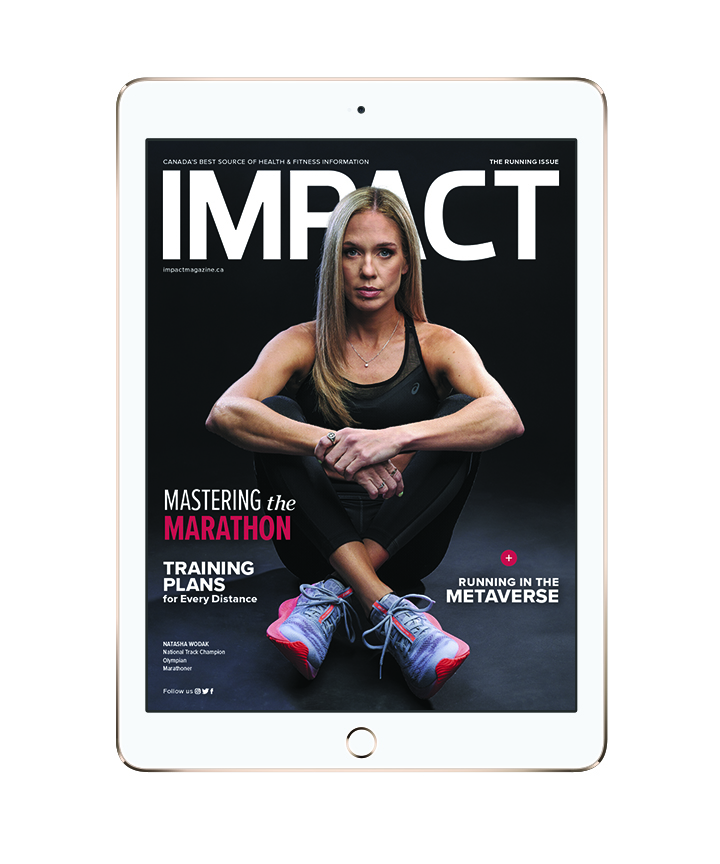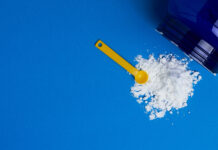
National Hockey League (NHL) players are rumoured to love coffee, ultrarunners and triathletes have an affinity for Coke, and bodybuilders often swear by their pre-workout drink. But no matter the source, caffeine is often an essential part of an athlete’s routine thanks to its performance-boosting qualities.
Caffeine’s ability to promote sports performance has long been recognized. Caffeine was listed as a banned substance by the International Olympic Committee (IOC) in 1984 and by the World Anti-Doping Agency (WADA) in 2000. Caffeine was subsequently removed from the list of controlled substances in 2004. But, even when it was a prohibited substance, caffeine was allowed in reasonable quantities. For example, only caffeine in amounts equivalent to more than four cups of coffee in the hours before an event may have tipped the scale.
Given caffeine’s rocky history in elite sport, it is not surprising that many athletes use caffeine with equal parts hopefulness and trepidation; hoping it may provide a critical performance advantage and hesitation about the potential side effects.Research regarding caffeine and exercise is evolving, but the evidence for its benefits is better than that of most other sports performance aids.
HOW DOES YOUR BODY RESPOND TO CAFFEINE?
Caffeine is a naturally-occurring chemical rapidly absorbed by the body and predominantly broken down in the liver. Within 15 to 45 minutes of consumption, caffeine enters the bloodstream and interacts with the body’s cells. Once absorbed, caffeine appears to primarily work by stimulating the central nervous system to elevate mood, vigilance, focus, alertness, and metabolism. Caffeine also seems to act directly with muscles to benefit muscle contraction.
Response to caffeine’s effects varies between individuals. Some people are more sensitive to caffeine than others and may experience unwanted side effects upon consumption. Side effects may include anxiety, difficulty sleeping, shakiness and headaches.
It’s also essential to consider whether you metabolize caffeine slowly or quickly. Slow metabolizers break down caffeine more slowly than fast metabolizers. For this group, caffeine may only mildly enhance performance or may not help at all. On the other hand, fast metabolizers will enjoy a significant performance boost.
The rate we absorb caffeine is due to a mix of genetic and environmental factors. How can you tell if you’re a slow metabolizer? The easiest way is to try caffeine before or during practice to see if it helps or hinders your activity. You can also purchase a nutrigenomics test to see if you are likely to be a slow metabolizer of caffeine.
WHAT ROLE DOES CAFFEINE PLAY IN EXERCISE PERFORMANCE?
Caffeine appears to enhance performance in a wide range of activities. Caffeine improves performance across endurance, high-performance and strength-training activities.
In addition to the physical benefits, caffeine provides enhanced focus and cognitive performance. It is important to note that exercise on its own can improve mental performance. Therefore, pairing an appropriate serving of caffeine can complement the natural boost generally achieved through exercise.
How much is too much caffeine? According to Health Canada, a moderate caffeine intake of 400 milligrams, or three eight-ounce cups of coffee a day likely does not pose any health risks. However, if you generally tolerate caffeine well during your daily tasks, continued moderate caffeine consumption should not hinder your athletic performance.
On the other hand, avoid caffeine if you are sensitive to it and experience unwanted side effects.

HOW TO USE CAFFEINE AROUND EXERCISE
Timing, dose, and tolerance are essential factors to consider when using caffeine. It takes about 15 to 45 minutes for caffeine to have a stimulating effect on the body. As such, many athletes take caffeine in the 60 minutes before their activity. However, research has found that caffeine is most helpful in the later stages of exercise once fatigue has set in. As such, you may want to save your caffeine for the last third of your marathon, or, split your total dose and take some right before your event and some near the end.
When dosing caffeine, consider that its half-life is about four to six hours, meaning that it takes this length of time for half the caffeine to clear your bloodstream. Therefore, when considering integrating caffeine into your exercise routine, timing is essential.
Before and during a workout: The long-lasting positive effects of caffeine are significant, as someone who ingests caffeine before a morning workout may still reap the benefits in the afternoon. In a study observing the relationship between caffeine and performance, researchers found that caffeine had a positive effect on prolonged exhaustive exercise lasting up to two hours. Specifically, caffeine has been found to improve endurance performance by two to four per cent when taken in a dose of three to six mg/kg body mass, or 200-400 milligrams of caffeine for a 150-pound (68-kilogram) person.
The benefits of caffeine can be paired with carbohydrates to boost your pre-workout fuel. Research has found that caffeine may enhance the absorption and usage of carbohydrates during exercise. When you combine caffeine with glucose, it produces enhanced activity compared to just glucose alone.
Your source of caffeine is another element to consider, as coffee may not be your optimal source. Research suggests that caffeine consumed in a dry form enhances endurance performance more explicitly. For example, athletes may use caffeine pills, caffeine gum, or caffeine in products like pre-workout formulations or sports gels to dose their caffeine more accurately. Before considering supplementation, always speak with a sports dietitian, doctor, or other sports professional.
Recovery: Balance caffeine timing with exercise, refuelling, and sleep to optimize exercise recovery. While many people worry that caffeine acts as a diuretic and contributes to dehydration, the evidence does not support this in the context of a regular diet with an adequate fluid intake. Further, caffeine does not directly change sweat rates, water loss, or affect fluid balance.
Sleep is a critical element in overall exercise recovery. Caffeine may interfere with sleep if you use it too close to bedtime. While caffeine timing for optimizing sleep may vary between individuals, many sleep experts recommend refraining from caffeine 10 to 12 hours before you plan to go to sleep. As long as you are mindful of this, you can effectively integrate caffeine into your exercise routine.
WHICH ATHLETES USE CAFFEINE?
Several studies looked at the prevalence of caffeine use amongst different athlete groups in the years following caffeine’s removal from the WADA prohibited list. Caffeine is a popular sports enhancement agent across athlete groups, but some use it in more significant quantities. A 2011 study found that endurance-sport athletes tended to use more caffeine. Triathletes, cyclists, and rowers had the highest urine caffeine concentration and gymnasts had the lowest. In addition, they found that older athletes were inclined to use more caffeine and that there were no gender differences in caffeine use.
TAKEAWAY
The perfect amount of caffeine needed to provide you with energy, but no unpleasant side effects is difficult to define. When considering using coffee to fuel physical activity, it is vital to recognize how your body tolerates caffeine before adding
it into your exercise routine. It is also important to note that if you tolerate moderate doses of caffeine well, anything additional would not likely provide any other benefits.
Caffeine may be the key to enhancing your sports performance. If you are mindful not to over-stimulate yourself with excess caffeine, research supports the many benefits of using this stimulant. Just remember to practice your nutrition before game day! Tailor your caffeine to your individual needs and tolerance to get the most benefit for your sport.

Read This Story in Our 2022 Running Digital Edition
2022 RACE SOURCE GUIDE. Training plans for every distance, yoga for runners, athletes with impact, running in the metaverse, recipes and much more!
















